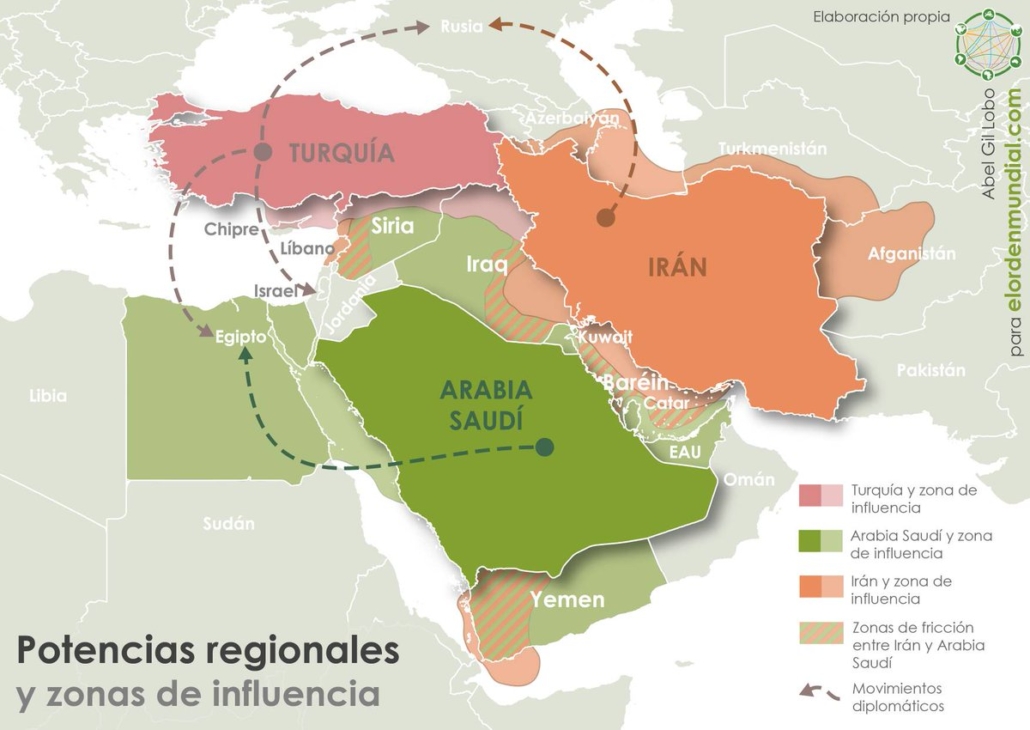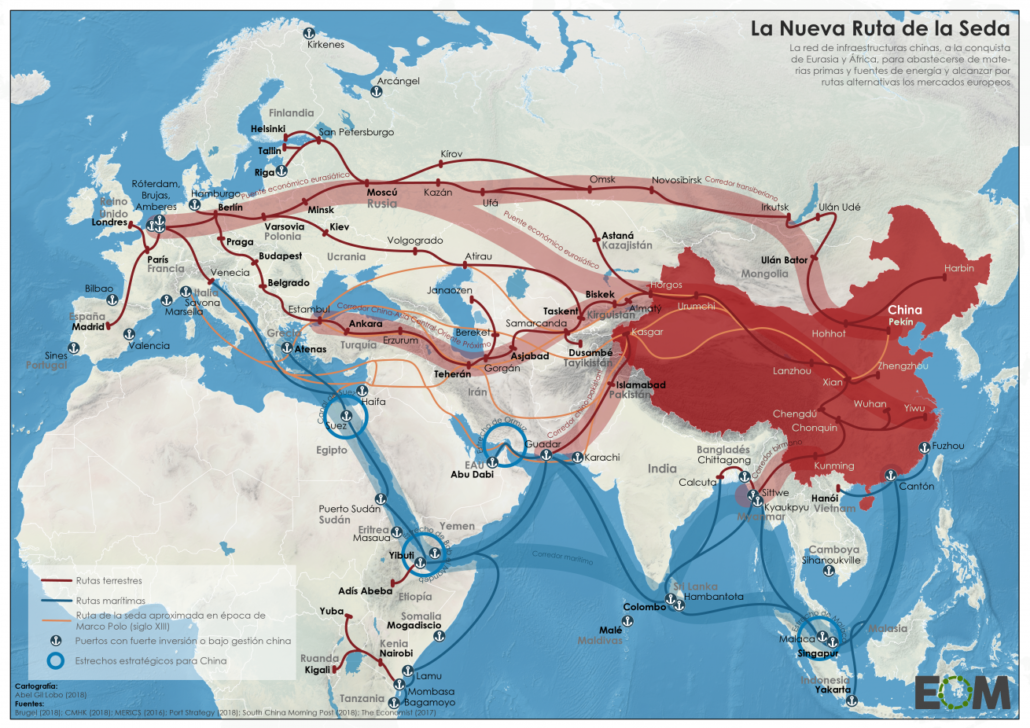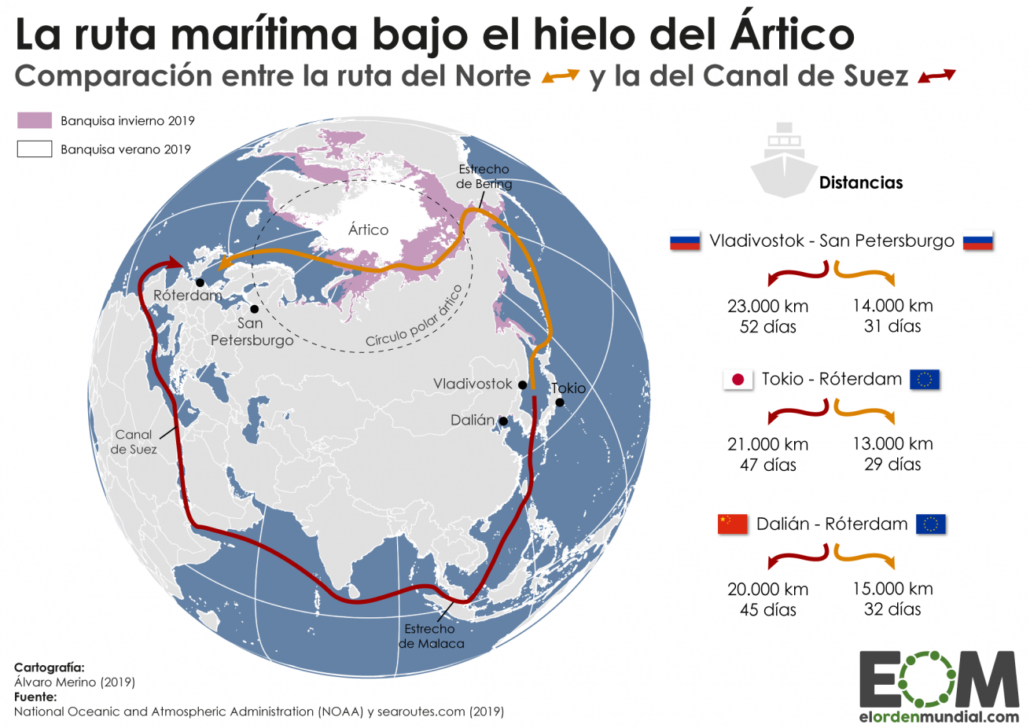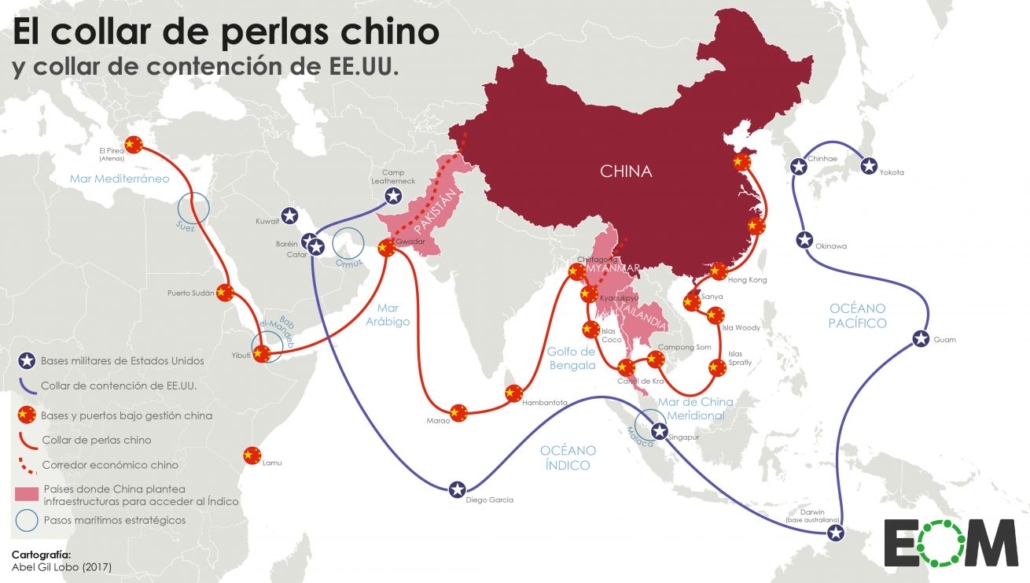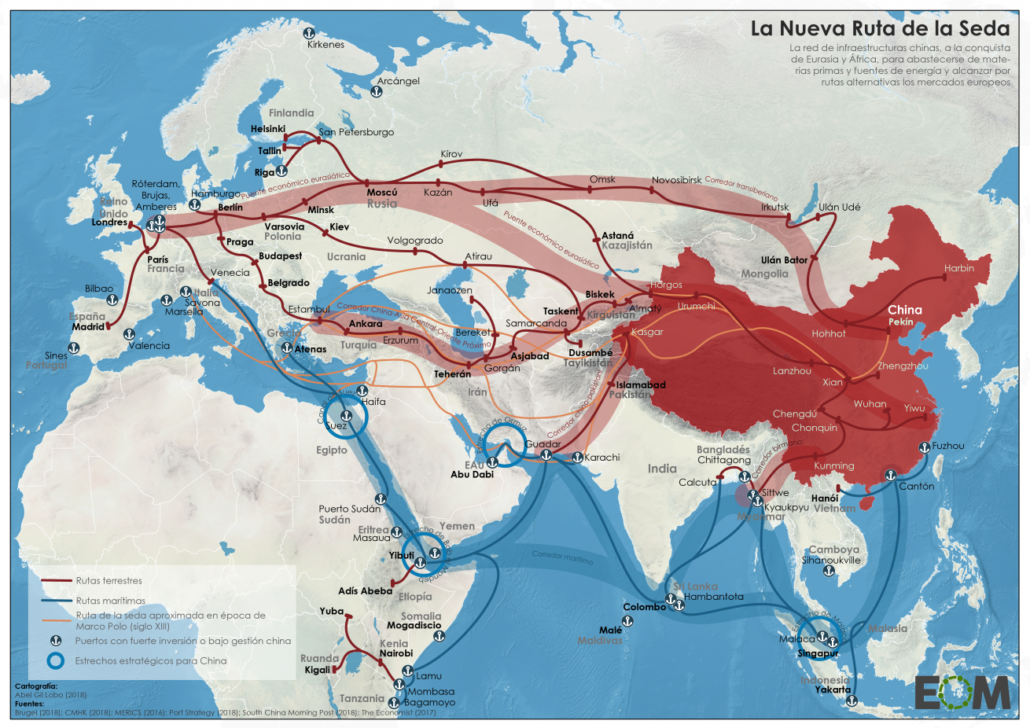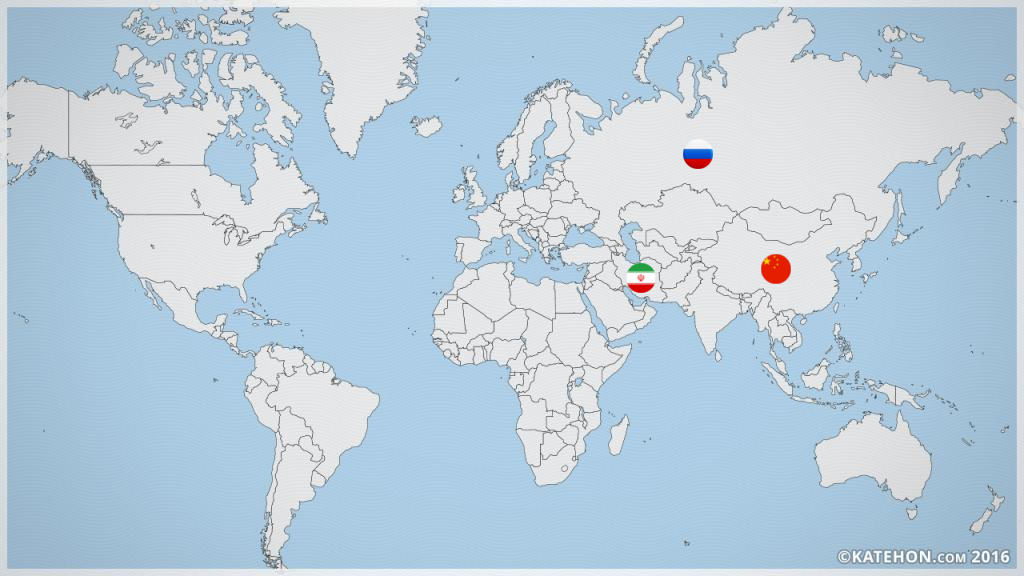Australia es uno de los países que conforman el QUAD, un bloque militar estratégico junto a India, Japón y EEUU creado por este último para contener la expansión de China en la región Indo Pacífico. El desacople de Australia de la agresiva política anti China estadounidense sin dudas debilita el Quad. Lo que no conocemos es que China es el principal socio comercial de Australia y Japón, y el segundo socio comercial de la India, lo que no hace fácil que estos países rompan sus compromisos y cadenas comerciales con China afectando sus propios intereses, para participar de una «alianza» en defensa de los «valores de la democracia» y de los «derechos humanos» contra el expansionismo chino, cuando EEUU aun con «guerra comercial», continúa siendo el principal socio comercial de China.
Curiosamente en estos días Gran Bretaña, en palabras de su ministro de relaciones exteriores Dominiq Rabb en el parlamento anunció que desea mantener relaciones positivas con China y trabajar junto a ella, estaría abandonando su declarada política anti china con la que acompañaba a su hermano mayor estadounidense.
Es posible que Australia y el Reino Unido estén especulando con un cambio de administración en EEUU en las elecciones presidenciales de noviembre próximo. Dr. Antonio Mitre Colaborador de Dossier Geopolitico
Australia «se desacopla» de la política estadounidense de China
por M. K. BHADRAKUMAR
Las cancillerías asiáticas tienen mucho que reflexionar después de la extraordinaria conferencia de prensa conjunta de EE. UU. Y Australia luego de la reunión de sus ministros de Asuntos Exteriores y de Defensa de AUSMIN (consulta ministerial Australia – EEUU) en Washington, DC, el 28 de julio. Es improbable que el Ministerio de Asuntos Exteriores South Block (India) se perdió el evento.
¿Cómo puede una conferencia de prensa conjunta convertirse en «extraordinaria»? En pocas palabras, cuando su sincronización y contenido están unidos en las caderas, haciéndolos inseparables y, lo más importante, cuando resalta las fallas geopolíticas en beneficio del ojo que discierne y conduce a la reflexión sobre los reinos de la posibilidad que uno no tenía sospechoso
Y en este caso, también sucede que la conferencia de prensa conjunta involucró a dos países que ellos mismos y el mundo en general tienden a describir como una «Alianza irrompible». El Secretario de Estado de los Estados Unidos, Mike Pompeo, recordó la singularidad de la situación al señalar que «no muchos» de sus homólogos se someterían a una cuarentena de 14 días cuando regresen a casa debido a un viaje a los Estados Unidos donde se produjo una pandemia. es furioso, simplemente por tener una «conversación importante».
El escenario para la reunión de AUSMIN fue preparado personalmente por Pompeo con su tan anunciado discurso de la alianza de democracias en la Biblioteca y Museo Presidencial Richard Nixon en California el 23 de julio. El contenido de ese discurso se destacó en su título «Churchillian», China comunista y el futuro del mundo libre.
Sin duda, Pompeo lo dijo como su «Discurso de la Cortina de Hierro» que sobreviviría a la presidencia de Trump. Ciertamente, el ex senador de Kansas tiene la intención de hacerse recordar si la llama del ardiente deseo en su corazón de convertirse en el 50º presidente de los Estados Unidos de América no se extingue por el viento frío de las realidades de la política estadounidense cuando el tiempo la elección de 2024se aproxime
Evidentemente, Pompeo se vio a sí mismo como un hombre de historia que unía a la comunidad mundial contra China. Él exhortó:
“Si doblamos la rodilla ahora, los hijos de nuestros hijos pueden estar a merced del Partido Comunista Chino, cuyas acciones son el principal desafío hoy en el mundo libre. El Secretario General Xi no está destinado a tiranizar dentro y fuera de China para siempre, a menos que lo permitamos. Ahora, esto no se trata de contención. No compres eso. Se trata de un nuevo desafío complejo que nunca hemos enfrentado antes. La URSS fue cerrada del mundo libre. La China comunista ya está dentro de nuestras fronteras «.
Sin embargo, el mundo en general sabría que Pompeo no es Churchill. Su discurso en California ya ha generado mucha vergüenza dentro de Estados Unidos, incluso entre los admiradores de Nixon, y de manera bastante visible entre los aliados cercanos de Estados Unidos, incluido, como parece, Australia.
Así, en presencia de Pompeo, la Ministra de Relaciones Exteriores australiana Marise Payne decidió dejar las cosas claras. Por lo que parece, fue un movimiento premeditado de su parte, ya que Payne estaba leyendo una declaración escrita. Cuando se le preguntó sobre el discurso de Cortina de Hierro de Pompeo en California, Payne respondió:
«Los discursos del secretario sobre China son suyos; las posiciones de Australia son nuestras. Y operamos, como era de esperar, sobre la base de nuestros valores compartidos, que se reflejan tanto en el enfoque de los Estados Unidos como en el de Australia.
“Pero lo más importante desde nuestra perspectiva, tenemos nuestros propios juicios y tomamos nuestras propias decisiones, en función del interés nacional australiano y sobre la defensa de nuestra seguridad, nuestra prosperidad y nuestros valores.
“Entonces tratamos con China de la misma manera. Tenemos un fuerte compromiso económico, otros compromisos, y funciona en interés de ambos países.
«Dicho esto, por supuesto, no estamos de acuerdo en todo. Somos países muy diferentes. Somos sistemas muy diferentes, y en los puntos en los que no estamos de acuerdo es donde podemos articular de manera madura y sensata y avanzar, como dije, nuestros intereses y nuestros valores.
«Como lo expresó recientemente mi primer ministro, la relación que tenemos con China es importante, y no tenemos intención de dañarla, pero tampoco tenemos la intención de hacer cosas que sean contrarias a nuestros intereses, y esa es la premisa a partir de la cual empezamos.»
Esto limitaba con la advertencia pública al nivel de un político y diplomático experimentado, pero era oportuna e incluso atrasada. En su discurso de hierro, Pompeo empujó innecesariamente el sobre y se negó a prestar atención a la advertencia gentil del aliado más cercano de los Estados Unidos, el Reino Unido, solo 3 días antes de que, como el principal diplomático de Estados Unidos, está peligrosamente cerca de hacer que la política exterior de la administración Trump parezca surrealista al caricaturizar el planeta como un lugar plano como las praderas de Kansas.
En una declaración en la Cámara de los Comunes el 20 de julio, así fue como el secretario de Relaciones Exteriores, Dominic Rabb, enmarcó la perspectiva del Reino Unido sobre las relaciones con China como tal, incluso cuando su gobierno cruza espadas con el enfoque de Beijing sobre la situación en Hong Kong, que por supuesto solía ser una colonia británica:
“Gracias, señor presidente. Con su permiso, señor presidente, quisiera hacer una declaración para actualizar a la Cámara sobre los últimos acontecimientos con respecto a China y, en particular, a Hong Kong.
“Como le dije a la Cámara el 1 de julio, el Reino Unido quiere una relación positiva con China. China ha experimentado una transformación extraordinaria en las últimas décadas. Con base en una de las culturas antiguas del mundo, China no solo es la segunda economía más grande del mundo, sino que tiene una base enorme en tecnología y ciencia.
“El gobierno del Reino Unido reconoce el notable éxito de China en sacar a millones de su propia gente de la pobreza. China también es el mayor inversor mundial en tecnología renovable, por lo que será un socio global esencial a la hora de abordar el cambio climático global, y los chinos viajan, estudian y trabajan en todo el mundo, haciendo una contribución extraordinaria.
“Entonces, señor presidente, permítame ser muy claro sobre esto. Queremos trabajar con China. Hay un enorme margen para un compromiso positivo, constructivo. Hay muchas oportunidades, desde aumentar el comercio, hasta la cooperación para enfrentar el cambio climático como he dicho, en particular con miras a la cumbre de la COP 26 el próximo año que, por supuesto, el Reino Unido organizará «.
El legado de Pompeo en el escenario diplomático a medida que las políticas exteriores de la administración Trump entran en el período del pato cojo es triste como es. De hecho, la presidencia de Trump ha dejado a los Estados Unidos a la deriva como un gran guardabosques en el desierto con el que cada vez más amigos y socios se muestran cautelosos a asociarse.
Es cierto que la comunidad internacional tiene desacuerdos con algunas de las políticas internas y externas de Beijing. Pero aquí también, es una imagen mixta. Porque nadie con sentido diría que China está socavando el orden mundial. Por el contrario, la culpa radica en ser una parte interesada que hizo fenomenalmente bien para desempeñarse de manera óptima. Los comerciantes son quoists de estatus, y una gran nación comercial como China no puede ser de otra manera.
Lo que China ha logrado bajo el liderazgo del Partido Comunista no tiene paralelos en la historia humana: elevar a cientos de millones de personas por encima del nivel de pobreza en un plazo de un par de décadas. A partir de 2018, el número de personas que vivían por debajo de la línea de pobreza nacional de China de 2.300 yuanes por año (en precios constantes de 2010) era de 16,6 millones en una población superior a 1.400.000 millones, lo que se traduce en el 1,7% de la población, lo que también está comprometido con el PCCh. erradicar totalmente para 2020 – 2022.
¿Cuál es la imagen correspondiente en los Estados Unidos? Millones de personas se están moviendo en la dirección opuesta, recurriendo a los bancos de alimentos, acudiendo al trabajo enfermos debido a la falta de salarios por enfermedad y muriendo debido a las desigualdades en la salud. Joseph Stiglitz dijo recientemente con desesperación: «Es como un país del tercer mundo». Estimó que el 14% de la población estadounidense depende de los cupones de alimentos y el país está en camino de una segunda Gran Depresión. Sin embargo, Stiglitz agregó: «Si nosotros (los EE. UU.) Tuviéramos la estructura política adecuada, podríamos evitarla fácilmente». ¿Cuál es el negocio del «mundo libre» del que habla Pompeo?
En toda la conferencia de prensa celebrada ayer en Washington, la australiana Payne no mencionó ni una sola vez el «virus Wuhan» o el Partido Comunista Chino, sino que dejó solo el nombre del «Secretario General Xi». (Tampoco la ministra de defensa australiana, Linda Reynolds, que habló después de Payne).
Ahora, las diferencias de Australia con China son numerosas y no necesitan reiteración. Pero ha vuelto con cautela sus pasos desde la postura abrasiva inicial del primer ministro Scott Morrison, un gran amigo del presidente Trump, cuando tomó el centro del escenario sobre el «virus Wuhan».
Una combinación de circunstancias está funcionando hoy, gracias a la comprensión tardía en Canberra de que Morrison se salió de la línea para complacer a su amigo, mientras que Australia, que debe su prosperidad significativamente a China, no debería morder la mano que lo alimenta La pérdida de Australia al molestar a China será la ganancia de otros países y nunca la pérdida neta de China; el liderazgo global de EE. UU. ya no atrae a la comunidad mundial, incluidos los aliados tradicionales de Estados Unidos.
Australia no puede ignorar que la diatriba de Pompeo contra el PCCh o el «Secretario General Xi» puede que ni siquiera represente el pensamiento de Trump, y, lo que es más importante, su vida útil es aún menor si va a haber una transferencia de poder en la Casa Blanca en el próximo 21 de enero. Payne midió cuidadosamente la quintaesencia de la asociación entre Estados Unidos y Australia:
«La relación fuerte y duradera de Australia y los Estados Unidos se basa en nuestros valores compartidos. Se basa en nuestra firme creencia en el estado de derecho, el respeto de los derechos humanos, nuestra promoción de la igualdad de género, nuestra protección de las libertades de religión y creencias. Se basa en el hecho de que ambos somos democracias fuertes y liberales que apreciamos la libertad de expresión y la diversidad de opiniones. Y se basa en nuestra confianza para tomar decisiones en nuestros intereses «.
De lo anterior, posiblemente, Australia tendría mucho más en común con una administración de Joe Biden que con Trump. La declaración de Payne se dedicó casi por completo a la pandemia de Covid-19 en la región de Asia y el Pacífico, a la que calificó de «crisis» en términos de desafíos de salud, económicos y de seguridad. Payne recordó a la administración Trump: «El papel de las instituciones multilaterales es más importante ahora que nunca para apoyar nuestros valores y nuestros objetivos estratégicos a medida que el mundo responde a los desafíos económicos y de salud de COVID-19».
Lo más destacado de la conferencia de prensa llegó al final cuando una corresponsal australiana, Amelia Adams de Nine Network, preguntó:
«Secretario Pompeo, si pudiera comenzar con usted, existe una gran preocupación en Australia por la creciente brecha entre su administración y China. Como saben, Australia depende mucho de China. ¿Deberían los australianos preocuparse por las consecuencias a largo plazo del colapso en las relaciones entre sus dos países para nuestra seguridad regional? Y tal vez, ministra Payne, si pudiera hablar de la misma pregunta después del secretario.
El valiente periodista colocó al ampuloso secretario de estado de Estados Unidos en una esquina cerrada. Él parloteo. No obstante, Payne no dejó pasar la oportunidad. Ella respondió en la audiencia de Pompeo:
“Amelia, creo que en parte respondí la pregunta en respuesta a la pregunta de nuestro primer representante esta tarde, pero desde la perspectiva de Australia, permíteme reiterar que tomamos nuestras propias decisiones. Lo hacemos en función de nuestros valores, muchos de los cuales son valores compartidos, abrumadoramente, pero lo más importante, en interés nacional de Australia. A menudo tenemos posiciones comunes con los Estados Unidos porque compartimos muchos de esos valores fundamentales, y ambos queremos el mismo tipo de región: queremos que sea segura, queremos que sea estable, queremos que sea gratis, queremos que sea próspero «.
Payne continuó describiendo la plataforma AUSMIN como «la alineación de las amplias perspectivas de Australia y los Estados Unidos sobre asuntos globales y regionales», que por supuesto «incluye nuestras discusiones en relación con China. Incluye nuestras discusiones en relación con la respuesta y recuperación de COVID-19 «.
Dicho esto, Payne repitió: «Tenemos, creo, un historial demostrable de tomar decisiones basadas en nuestros propios intereses … Sin embargo, no estamos de acuerdo en todo, y eso es parte de una relación respetuosa».
¿Por qué las dos valientes mujeres estadistas australianas decidieron circunnavegar el mundo y viajar a los Estados Unidos, donde las muertes por Covid-19 aumentaron por tercera semana consecutiva a más de 6.300 personas en los siete días que terminaron el 26 de julio, e incluso el virus entró en el La Casa Blanca infectará al Asesor de Seguridad Nacional de Trump, ¿y cuando ni siquiera los homólogos masculinos de Payne y Reynold se atreven a viajar a Washington, DC?
¿No se pudo aplazar la reunión de AUSMIN? La respuesta es simple: Canberra quería transmitir a la comunidad mundial que las políticas australianas no deben confundirse con la misión evangélica de Pompeo.
Australia observa con incredulidad que, a pesar de la discordia sobre Hong Kong, Gran Bretaña todavía da la bienvenida a los estudiantes chinos para que vayan a sus universidades a estudios superiores, y que la postura de Gran Bretaña sobre el 5G sigue siendo muy ambivalente, y que los aliados europeos de EE. UU. están marcando distancia de Washington.
Por encima de todo, Canberra quiere que Beijing sienta que tiene la intención de seguir una política de China que está lejos de ser un clon estadounidense, y que está interesada en trazar una trayectoria independiente hacia el establecimiento de una relación mutuamente beneficiosa a pesar de todas las diferencias.
por M. K. BHADRAKUMAR Publicado el 29 de julio de 2020 Asia Times

